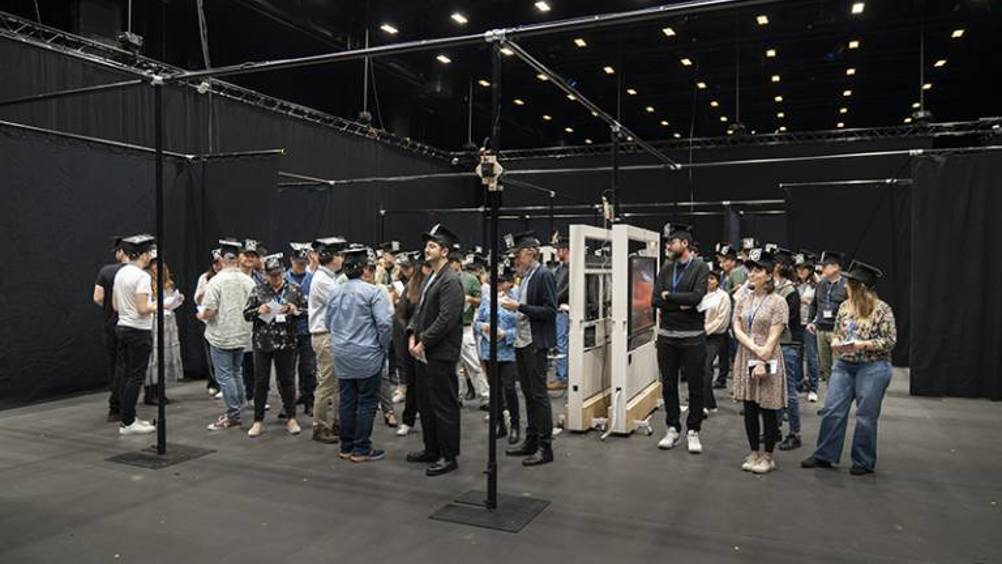UCL ‘art gallery’ experiment aims to inform better design of spaces
An experiment conducted by scientists at UCL has tracked movement through a simulated art gallery, providing insights into how people interact with public spaces.

Over 100 volunteers were tracked walking through a custom-built network of moveable ‘walls’ at UCL’s PEARL (Person Environment Activity Research Laboratory) facility in East London. Measuring 15m2, the space was set up to resemble an art gallery, with participants instructed to move between rooms and perform different tasks, including an evacuation.
Volunteers wore caps containing a tracking device and a barcode to enable camera tracking, with some participants also wearing mobile electroencephalography (EEG) systems to measure brain activity. It’s hoped the research, set to be continued in a series of further experiments at PEARL, will produce valuable insights for designing spaces such as transport hubs, hospitals, or offices.
“To study how people navigate their environments and how their brains support this, we can do that in a research lab – but that’s not very realistic – or we can do that in the real world – but that’s harder to control or modify,” said research lead Professor Hugo Spiers, from UCL’s Department of Experimental Psychology.
Register now to continue reading
Thanks for visiting The Engineer. You’ve now reached your monthly limit of news stories. Register for free to unlock unlimited access to all of our news coverage, as well as premium content including opinion, in-depth features and special reports.
Benefits of registering
-
In-depth insights and coverage of key emerging trends
-
Unrestricted access to special reports throughout the year
-
Daily technology news delivered straight to your inbox







Water Sector Talent Exodus Could Cripple The Sector
Maybe if things are essential for the running of a country and we want to pay a fair price we should be running these utilities on a not for profit...